
In this article, I will show you how you can reuse charcoal. How you can properly save the unburned coal or briquettes for the next time you smoke or grill, and some other uses too!
Because often you pay almost $30 for a bag of premium hardwood charcoal, dump half of the bag into your grill, light it and grill just two juicy steaks for you and your wife. But, it takes only a few minutes, and at least half of the charcoal is still unburnt.
What a waste. It may have been cheaper to use dollar bills instead!
Everybody knows what to do with the leftover food, but what about left over charcoal? Have you ever thought about it, or do you just let em’ burn like most of us? Can you reuse it, the partially burnt stuff, maybe even the ashes?
Of course, you can reuse unburned charcoal, and even the ashes have uses you may never have considered. Recycling lump charcoal or briquettes will save you money, reduce waste and help the environment.
So, next time you’re done grilling or barbecuing, don’t just dump those barely or unburned charcoal pieces, reuse and re-purpose them to get more bang for your buck.
Note: Most of these recycling methods require 100% natural charcoal without additives or chemicals of any kind. Briquettes have additives and are not suitable for all the methods we’ll discuss.
Jump to:
- 1 Quality Hardwood Charcoal is Expensive, Don’t Waste It!
- 2 Snuff Em’, Sift Em’ and Save Em’
- 3 If You Must Use Water To Kill The Coals
- 4 Like a Used Car, Used Charcoal Has Limitations
- 5 1. Fertilize Your Garden — Black Gold Agriculture
- 6 2. Reduce Rust
- 7 3. Add Used Charcoal to Your Compost Pile
- 8 4. Make Flowers Last Longer
- 9 5. Reduce Odors Around The House
- 10 6. Emergency Intestinal Aid
- 11 7. Use It to Shine and Polish
- 12 A Warning About Charcoal Ash — Do Not Eat IT!
- 13 Save the Planet and Your Budget By Reusing Charcoal
Quality Hardwood Charcoal is Expensive, Don’t Waste It!
Every time you cook something hot and fast, you need to fill up your grill with coals. You usually put in 2 to 3 times as much as you need. Same story with low and slow if you use the charcoal snake method. Much of the charcoal is either partially charred or unburned altogether.
Some of us will either just let it burn out all the way, while others will just close the lid and discard them before the next grill. Good quality natural charcoal is not cheap so save every piece you can. It’s easy to do.
Snuff Em’, Sift Em’ and Save Em’
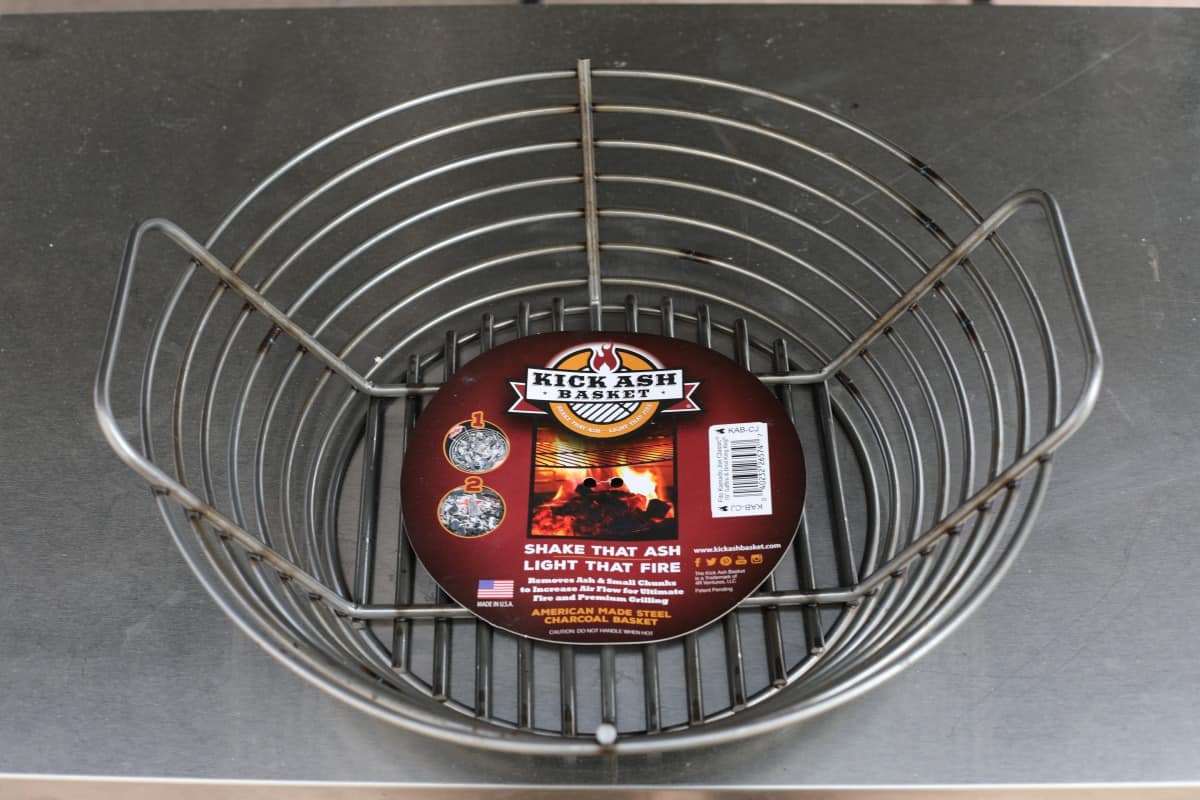
Close the lid and vents to smother the fire the moment you take the food off the grill. As you already know, this will kill the fire from lack of oxygen, and stop it from spreading to the unused part of the charcoal. Let it cool down up to 24 hours just to be sure the coals are out.
Sift the charcoal through a wide mesh screen or use a kick ash basket if you have one. The idea is to knock off all the white ash from the unburned portion. Every piece of unburned charcoal or briquettes that are still black are combustible.
Save them in an inflammable container or dump them in the bottom of the grill as a base for the next fire.
If You Must Use Water To Kill The Coals
You may have reason to put your fire out immediately using water, especially if you live in a fire-prone area like the southwest.
Use tongs and carefully pick out the coals and plop them into a bucket of water. You don’t want to dump water onto your grill because it will cause rust, and it’s a big mess to clean up.
You’ll have to leave the unburned charcoal in the sun to dry for a couple of days, then store until you’re ready to light your next fire. There are tips in this guide on how to store charcoal safely and effectively.
Like a Used Car, Used Charcoal Has Limitations
Partially burned charcoal has lost some of its mass and potential energy. Like a used car that already has 150,000 miles on the clock, it won’t go the distance or last as long. You’ll need to supplement the used charcoal with new fuel.
If you’re using a chimney starter, add new charcoal first, or the smaller used pieces may fall through. The reused bits will light up quickly and helps to get your grill going fast. (And if you don’t use one, we highly recommend you do! Check out our guide to the best charcoal chimneys to see why, and some top products.)
You can always burn used charcoal or briquettes to save money and time. But, there are seven other things you can do with unspent charcoal. To get the best results, use 100% natural (hardwood, mesquite, coconut, etc.) charcoal.
1. Fertilize Your Garden — Black Gold Agriculture

There is evidence that tribes in the Amazon basin used crushed charcoal to improve poor or depleted soil almost 1,500 years ago. Modern science has backed up the fact the charcoal adds nutrients to the soil, even more so than compost or manure.
You can listen to or read about the evidence in this interview with NPR about “Black Gold Agriculture.”
Many flower enthusiasts, especially orchid growers, believe that adding crushed charcoal to the soil will absorb toxins and increase the alkalinity of the soil. You may have just learned the secret to making the best garden in town.
2. Reduce Rust
Charcoal naturally absorbs moisture. Try placing some in a fine-mesh bag or doubled up sock and leave it in your toolbox to help prevent rust.
3. Add Used Charcoal to Your Compost Pile

You can add charcoal to the compost as long as you don’t add the ashes. Too much ash will kill the natural process by making the soil too alkaline.
4. Make Flowers Last Longer
Place one piece of charcoal or briquette in a flower vase under the cut stems to preserve flowers longer. Weigh it down with glass marbles or seashells if it floats, and change the water after 4 to 5 days.
5. Reduce Odors Around The House
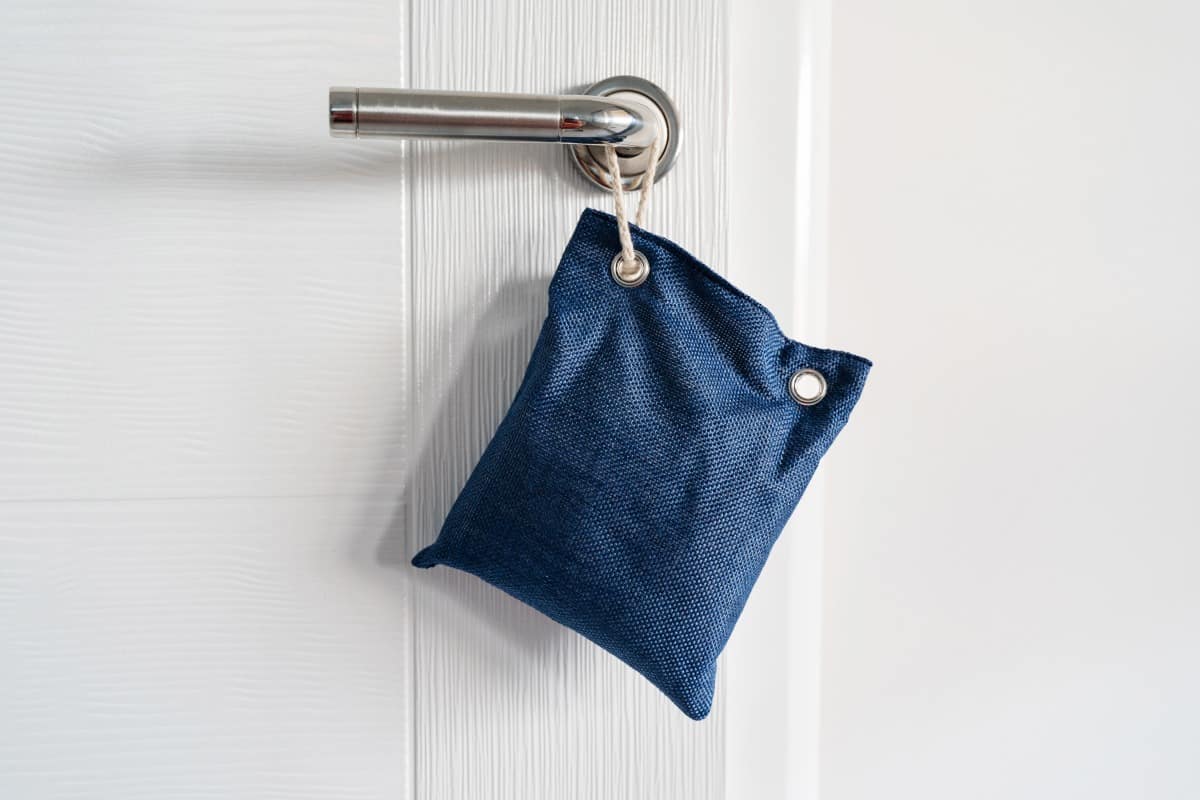
Use a fine-mesh bag, and put some of the smaller pieces inside. The charcoal absorbs moisture and odors in the refrigerator and stinky shoes.
Give it a try, but be sure that it does not leak into your shoes.
6. Emergency Intestinal Aid
Charcoal carbon is an ancient remedy for upset stomachs and diarrhea. If all you have are some pieces of charcoal, and you’re miles from anywhere, chewing a small piece can help absorb toxins and reduce symptoms.
The tablets that you find in drug stores come from “Activated” charcoal. It’s wood charcoal that has undergone an industrial high-temperature process to increase the pores and surface area of the carbon.
7. Use It to Shine and Polish
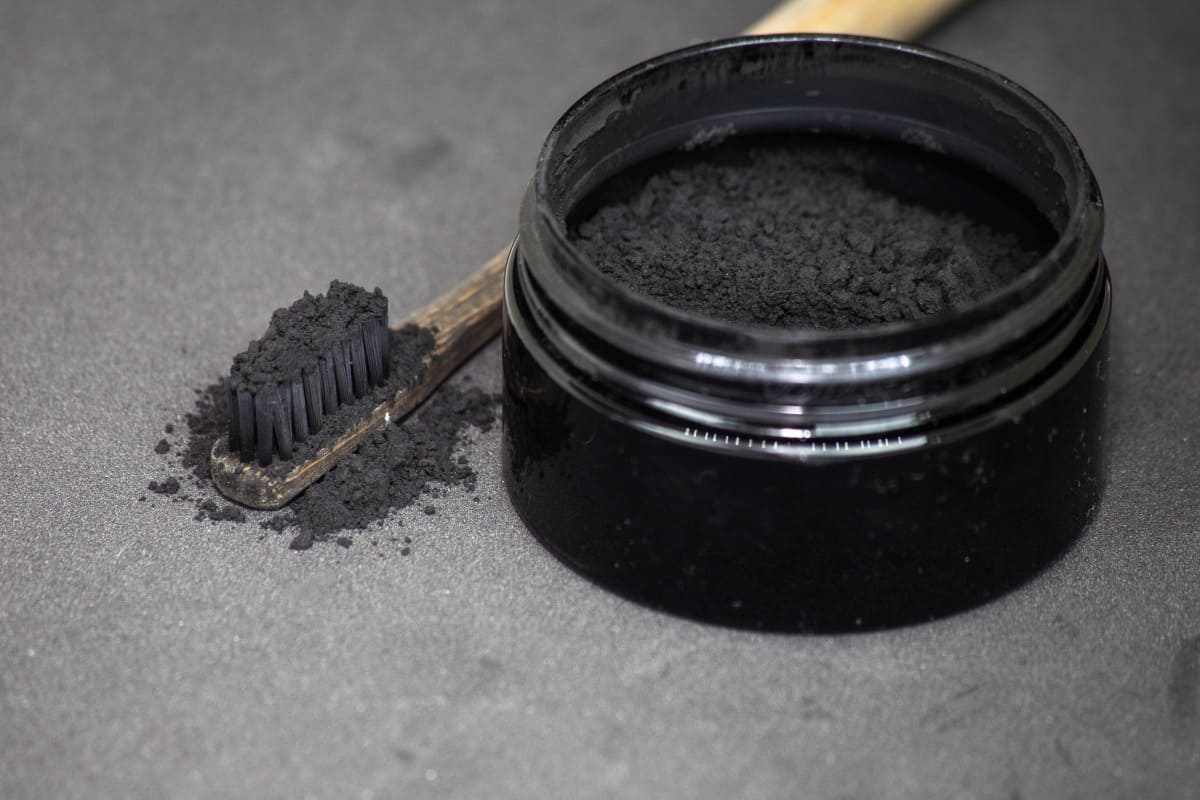
How about brushing your teeth with charcoal? Sounds crazy, but people have used it as a dentifrice for centuries. In Asia, they love charcoal toothpaste products.
You can use the carbon to polish silverware or take rust off tools. It’s somewhat abrasive so test it out first.
A Warning About Charcoal Ash — Do Not Eat IT!
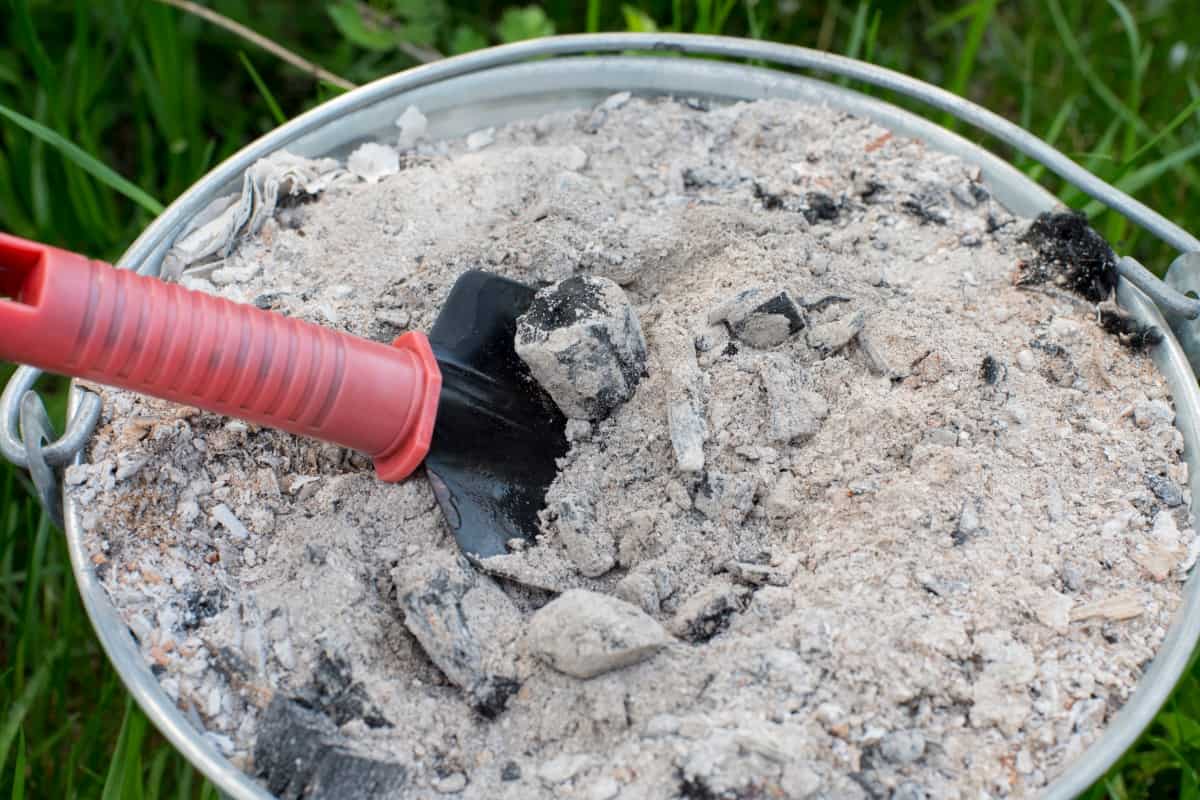
You need to know that unburned charcoal and the ash are two very different things. Ash or potash contains high levels of potassium. When mixed with water it creates potassium hydroxide, the same ingredient as drain cleaner, also called lye.
You must be careful where you throw the ashes because they can change the alkalinity of the soil and are harmful to plants that need acidity like hydrangeas, azaleas, and fruit like blueberries. The alkalinity can ruin new seedlings too.
But the alkalinity can be useful for:
- Controlling aphids on your tomato plants, and slugs on the ground
- Reducing Algae in fishponds by adding one teaspoon per 1,000 gallons.
- De-skunk your pet by rubbing a handful into its coat to neutralize the stink.
It can also be used for making Lye Soap the old pioneer way:
Save the Planet and Your Budget By Reusing Charcoal
There is no point in letting your charcoal burnout if you don’t need it. You don’t leave your gas or electric stove running while you eat and then turn it off later, do you?
Close-up the grill as soon as you’re done the with the cooking. Save your charcoal for another day. Besides, you’ll never know when might run out of toothpaste.
Feel free to pass this article to grillers, gardeners and anyone who has excess charcoal on their hands. If you have any ideas on how to repurpose used charcoal, please let us know in the comments below. And while I have your attention, please go check out my extensive guide to using a charcoal grill for top tips on how to master this form of cooking.
Happy grilling!


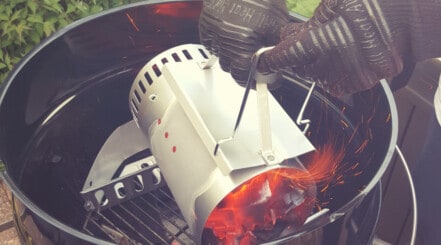
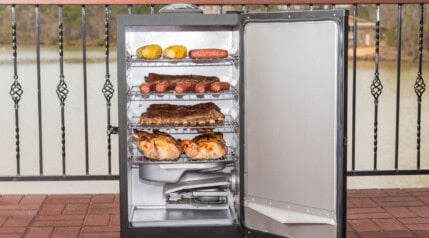

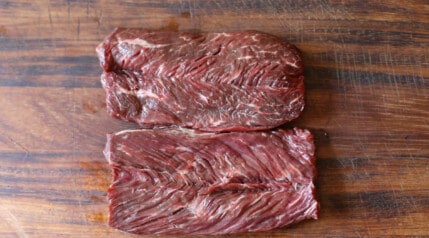
Have you ever heard of charcoal designed to use multiple times? How does it work?
Hi Marjorie,
I haven’t, no, and am sure it cannot exist because once the charcoal is burned, its energy is spent, and it’s just ash. What I’m referring to in this article, is charcoal that’s been either partially, or even fully burned. Many times when you finish cooking, the charcoal isn’t completely burned through and many people just throw it away. Or if it has burned, there is always a load of ash to deal with.
What this article is aiming to discuss, is what you can do with the partially burned coal, or the ash at the end of a cook, instead of simply throwing it away (which many people do.)
Are there uses for coal that has not been used ?
Yes, I have included them in the article above. If you mean ‘further uses’, then I’m not aware of any above and beyond what I’ve already discussed.
Still lit partly burned charcoal can be used as the fuel for a resin/oil incense burner.
Charcoal creates carbon monoxide. There are no safe levels of this poison you can consume. Please don’t burn inside.
Hi, Mark, would you have a trick to use charcoal briquettes that doesn’t ignite and burn badly; would there be a way to get back the dryness, because it looks that they are humid?
Looking for your answer! Thanks!
Hi Jean,
It depends on the brand of charcoal, but once briquettes get damp, they can be a pain to dry out completely and can remain hard to light.
If they have been so wet that the binders have deteriorated and the charcoal is falling apart, I wouldn’t even bother to try to use them. But if they are still ‘whole,’ then what I’ve done in the past is to place somewhere spread out where they can dry for a few days, and then only use them for low and slow smoking, not high heat searing, as they are harder to light and get those higher temps.
To use them for low and slow, start a fire with new, dry, good charcoal, and surround with the ‘once damp but now dried’ ones. The extra heat from the fresh charcoal fire dries them out further while in the firebox, and they will catch and burn and be suitable for a lower heat cook.
Pour it over oil spots on your driveway to absorb the oil…(?)
* I haven’t done this yet, but it’s an idea
Nice one and very interesting. I like it.
I usually need a full chimney of Kingsford briquettes to get my Weber grill hot enough. 2 for a multi course meal or 2” steaks. Problem is getting used charcoal to ignite in chimney as the smaller pieces impede air flow. Have tried bottom layer of new briquettes, etc., but it still takes much longer, even adding more newspaper. Suggestions Heartier kindling? Thanks.
Have you considered switching to lumpwood charcoal? It’s easier to light, and burns a lot hotter.
Hi Mark, Is it possible to use the bamboo charcoal that is used in sealed pouches for closets, drawers, sneakers etc in addition to the barbecue type charcoal? Thanks for all these tip. Lm
Hi Lm,
Sorry, but I’m not sure what you’re asking? The bamboo charcoal in pouches is activated charcoal, I believe? Charcoal that has been treated at very high temperatures with oxygen, to make it more porous, increase it’s surface area, and increase its ability to absorb moisture, smells etc. But I’m not sure what you mean by can you use it? Can you clarify please?